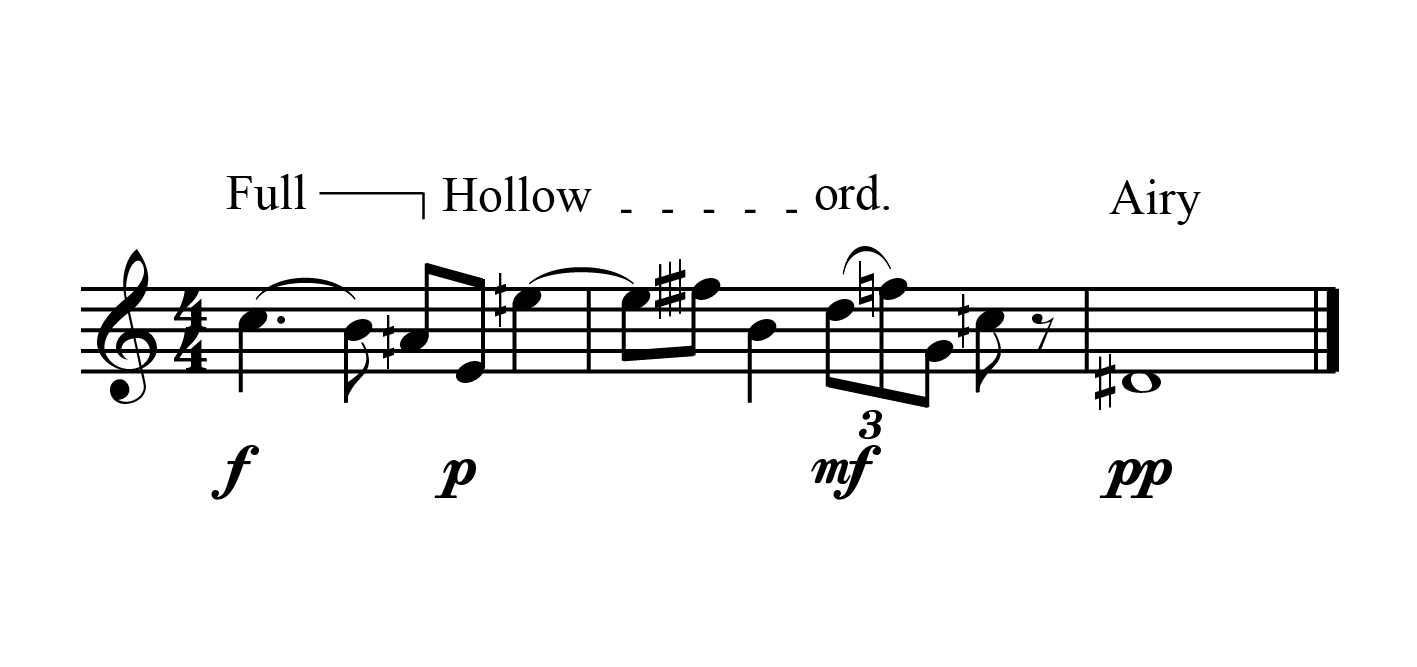Tone colour
Tone colour is altered by changing the internal shape of the mouth and the focus of the air stream against the far side of the lip plate. The subtle changes are more apparent on the alto flute than on the C flute, due to range of tone available on the instrument. It is possible to create very different timbres from the hollow sound at one end of the colour spectrum, to the bright, edgy sound at the other end.
Tone colour
As we have already seen from the section on Dynamics, there is a direct link between tone colour and projection. A hollow sound will not project as well as a richer sound, and while a whole range of tone colours can be easily produced at low to medium dynamic levels, they do not always lend themselves well to louder sounds.
Notation of tone colour
To give a specific instruction about the timbre of a particular note, it is usually most effective to give a written direction over the passage concerned.
The following directions may be useful as a guide:
Full (f.s.) - usually associated with loud dynamics but not exclusively
Hollow (h.s.) - open sound, created by directing the air slightly higher than usual across the flute, and by opening the inside of the mouth and throat.
Bright (b.s.) - rich in harmonics, this is created by angling the air slightly more into the flute. This is a highly focused sound.
Airy (a.s.) - The embouchure is opened a little more than usual to create a less focused sound.
It is less common, but equally possible, to express tone colours by the vowel shapes used to produce each sound. The effect on the flute’s sound, while more subtle, equates with the differences heard in the voice while singing the same sounds.
While using such directions in a piece of music, it may be necessary to define any such terms used in an opening glossary, to ensure that the player has a clear understanding of the intended sound. It must also be made clear in the score when the player is to return to ordinary sound production. This may be achieved by using the word ord., or for short passages by placing square brackets above the stave for passages where the tone colour is to change.

Note
It is important to note that certain contemporary techniques (for example, multiphonics) may have limited flexibility in terms of tone colour. In the specific example of multiphonics, certain mouth shapes and air angles are needed to allow the multiple sonority to resonate, and the player has little control over other aspects of the sound. It is advisable to leave subtle alterations of tone colour to the interpretation of the performer in complex situations such as this.